Final Practice Day with Ratliff
Former College Fishing angler and local weighs in on Cumberland

Attending college at Campbellsville University just up the road from Lake Cumberland gave Nick Ratliff plenty of opportunity to fish the massive reservoir throughout the year, but especially in the winter.
Qualifying for the championship via the Central Division of the Toyota Series, Ratliff is fired up to have a chance at $200,000 on a lake he’s very familiar with. So, with that in mind, I jumped in the boat with the 23-year-old pro for the final day of practice to get his thoughts on the tournament.
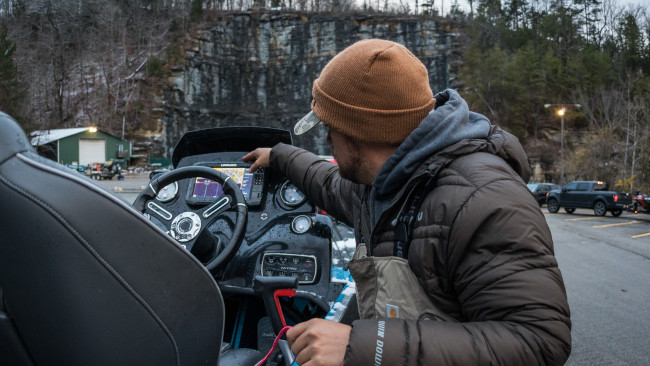
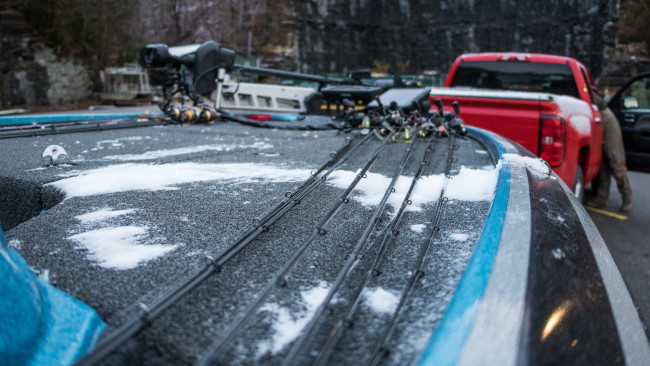
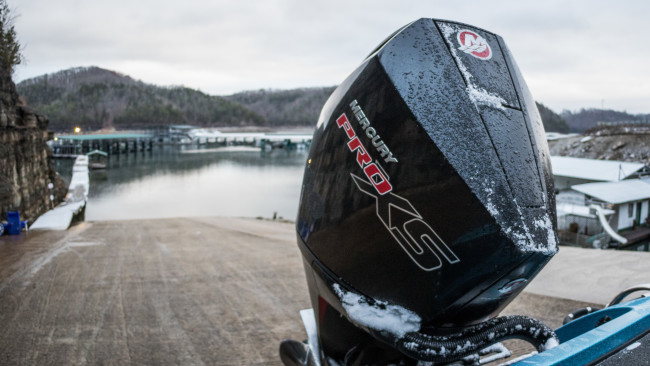
After rain and snow fell on day three of practice, Ratliff has us meet at Grider Hill Marina in Indian Creek at 8 a.m. ET. He texts me on the way that he wants to check the ramp first to make sure it’s not icy and it turns out the ramp is more than fine.
The temperature this morning is hovering around 30 degrees, but with the wind blowing it feels substantially colder.
“Yesterday I had no problem fishing, but when it’s cold like this I’m OK with getting a slower start,” laughs Ratliff as he readies the boat.
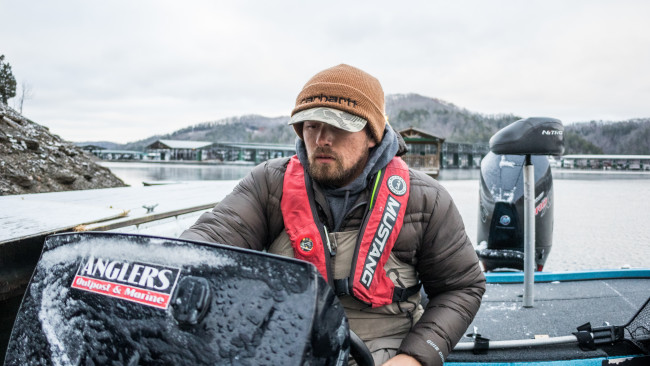
With the boat in the water and the motor warming up, Ratliff gives me a rundown of how his practice has gone so far.
“I usually like to fish from Conley Bottom down to the dam, but I’ve checked stuff up the lake some this week, too,” says Ratliff. “I know what I need to do to get bit, but I’ve really tried to practice for what the fish are doing now and not get stuck in what they should be doing from experience.
“The fishing isn’t great right now, but we might be on the verge of it getting good. For me this week, my tournament is going to come down to making decisions and trusting my gut.”
By now we’re through the no-wake zone and ready to roll for the first stop of the day.
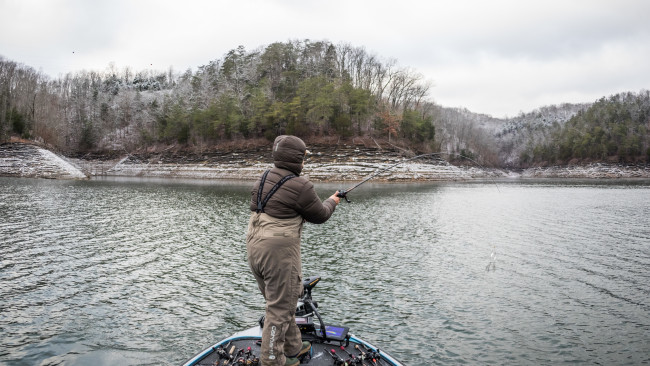
We don’t go far and Ratliff hops on the deck and grabs an umbrella rig to start the morning.
“I saw some fish here the other day and I want to check this real quick,” says the boat salesman for Anglers Outpost and Marine. “I’ll probably catch a big striper on my first cast because they love this spot.”
After four or five casts with no takers and not much activity showing on the graph, Ratliff sits down to pour some coffee as we idle to the next spot.
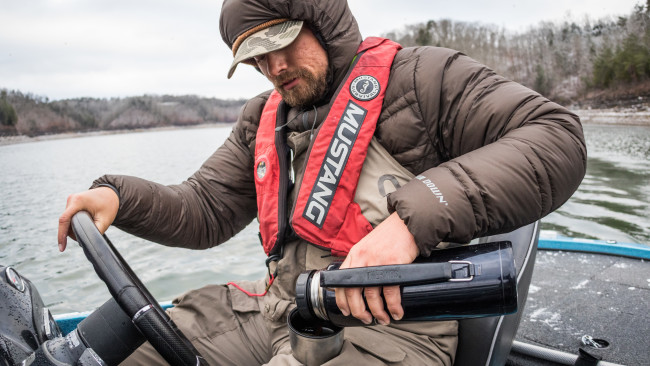
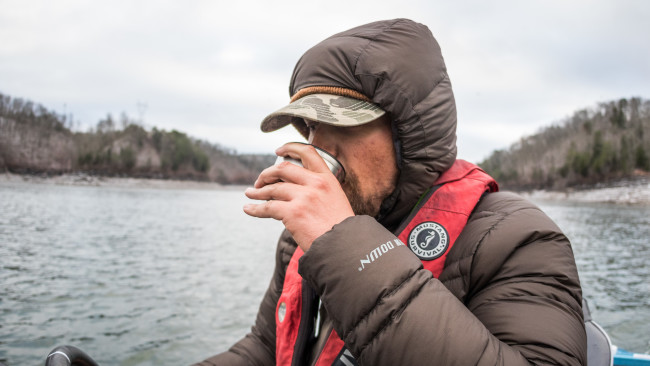
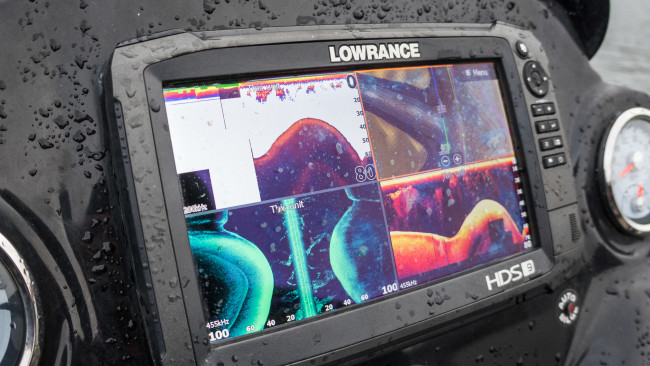
Sipping on his coffee gives Ratliff an opportunity to show me just how much bait there is in the lake.
“This isn’t a lot of bait, but you see this almost everywhere you go on Cumberland right now,” Ratliff says. “The problem is the bait is so high in the water column and the fish are up there with them, but you want them down closer to the bottom to make them easier to catch with a spoon or Damiki rig.”
We keep idling down the bank and work our way to the next pocket over before Ratliff picks a rod back up.
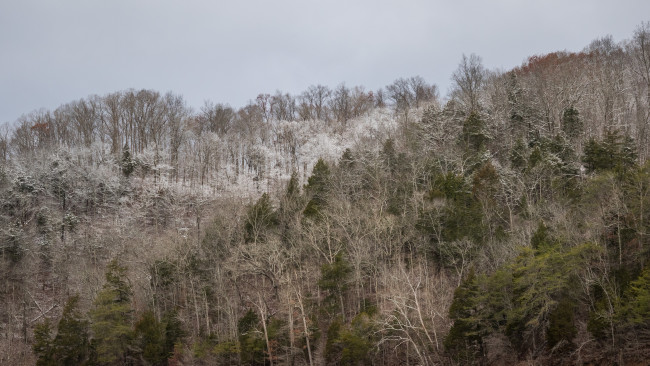

There isn’t as much snow sticking to the shoreline of the lake but glancing around at the treetops it gives off a very winter vibe.
Ratliff picks up a jerkbait to start working a section of bank and quickly hooks up with a little spotted bass.
“There’s so many of these little Kentuckys in here,” says Ratliff. “Cumberland has some big Kentucks, like 4-pounders, but we haven’t really seen them the last few years. Someone could stumble into some good ones, but I think largemouth and smallmouth are going to be the biggest players this week.”
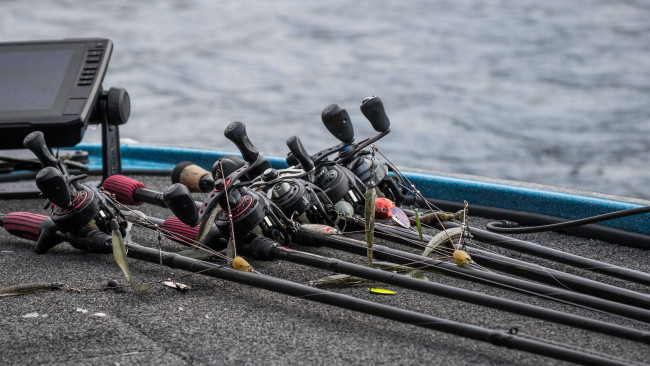
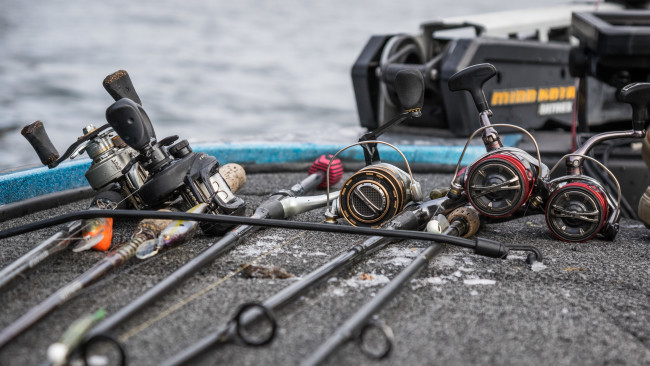
Ratliff is trying to keep an open mind in practice and it shows on his front deck. From an Alabama rig to a spoon to a Ned rig, he’s got pretty much everything you’d expect and has been using them all throughout his practice.
“I may not use every one of these in the tournament, but you can bet I’ll have them all with me,” laughs Ratliff. “Cumberland is a lake that can fish different day to day and I want to make sure I can keep everything honest.”
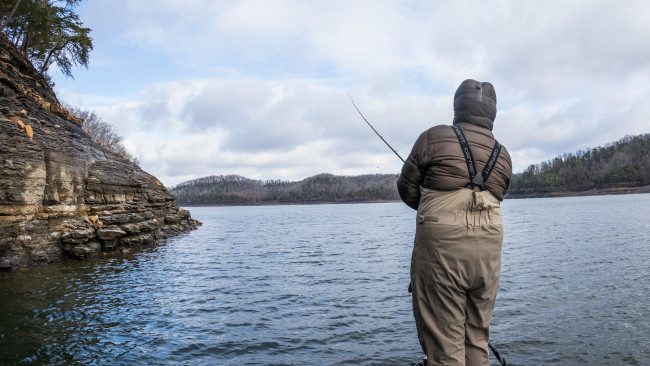
Before making another move, Ratliff grabs a crankbait and starts covering some water.
“I bet there will be a lot of guys throwing a crankbait in this tournament,” says Ratliff. “I haven’t played around with it a whole lot, but this bank looked too good not to try it.”
No takers for Ratliff means it’s time to roll on.
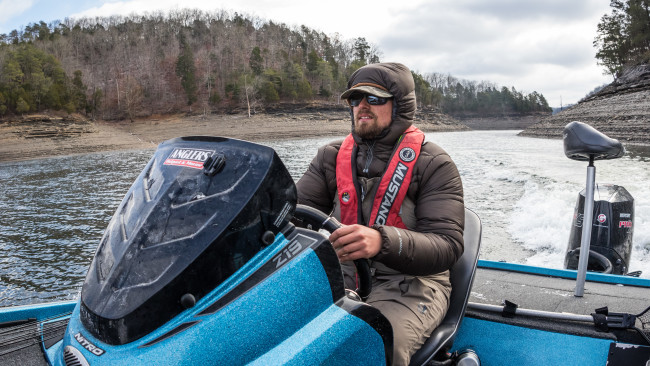
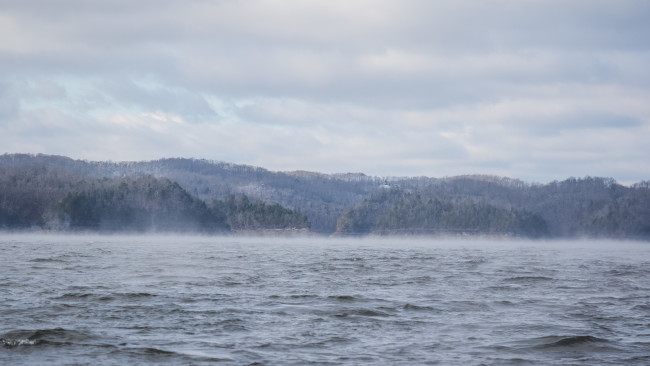
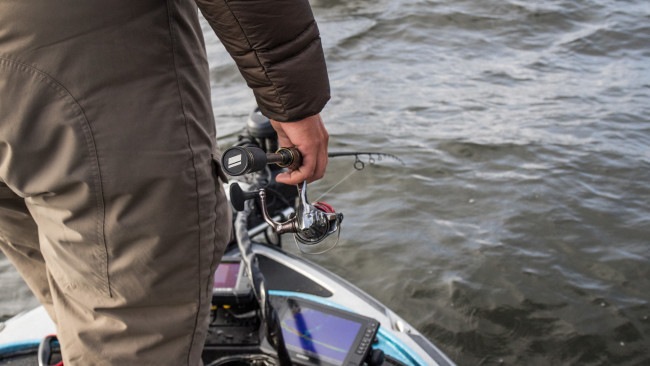
We head out towards the main lake and Ratliff sets down and starts looking around with the trolling motor. He’s got a Damiki rig in hand and makes a few unproductive drops.
“The water color out here is pretty bad and with this wind blowing it’s hard to make a good drop,” Ratliff says. “If there was a bigger school out here I’d put more time in with this, but let’s head out and get out of this wind.”
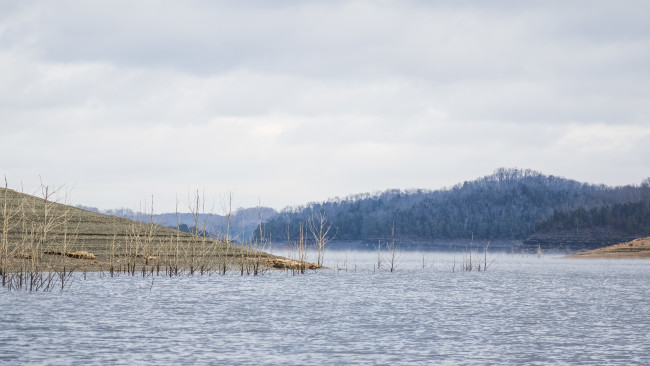
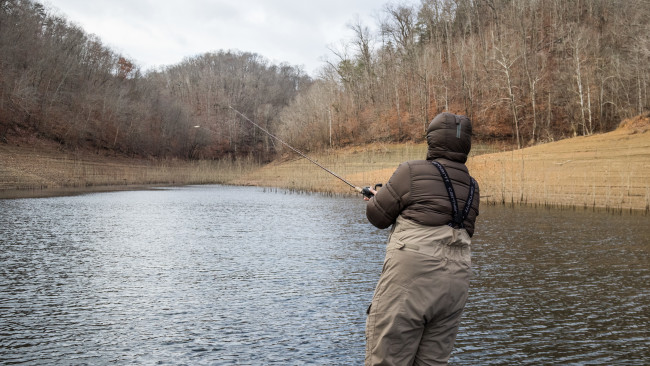
Pulling into a pocket up the lake I ask Ratliff more about the water color and why it’s different across the lake.
“Right now is usually when the lake turns over and that’s what’s happening out here now,” says Ratliff. “That’s part of the reason the fishing may be a little off. Everyone keeps saying ‘We need the water temp at 55, 55 is when it gets good’ and yeah, that’s when the winter bite starts to get good, but more importantly that’s when the turnover is done.”
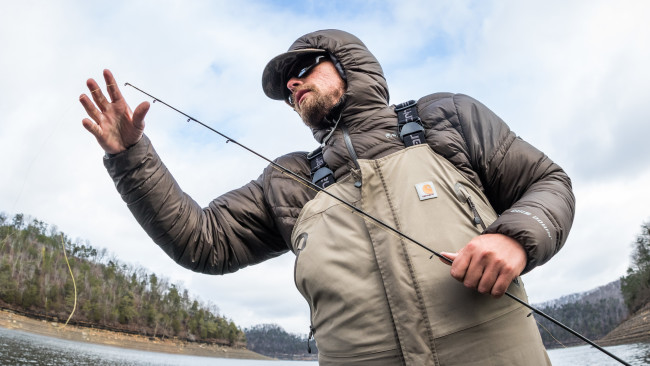
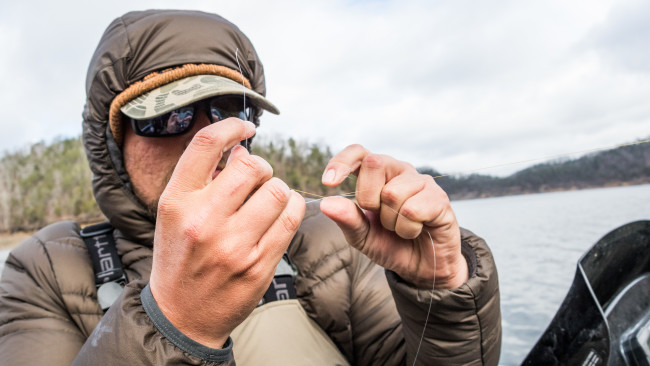
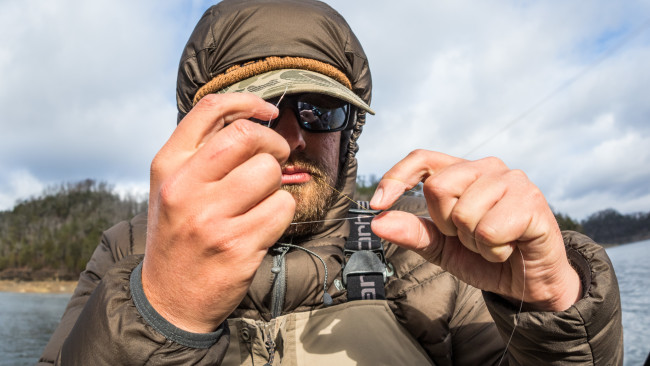
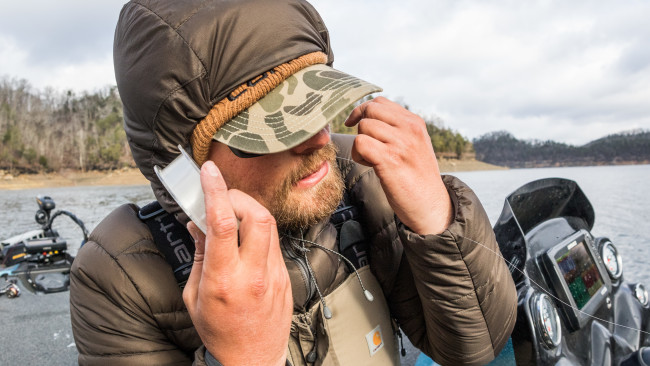
Ratliff keeps eyeing a spinning rod on the deck that needs a new leader and once the sun pokes out he decides it’s time to tie a new one on.
“Let’s slide over here out of the wind so I can tie a new FG knot,” he says. “I don’t know if my fingers will let me tie this, but we’ll give it a shot. I really think it’s not that slow of a process to tie an FG once you’ve done it a few times.”
Cold hands and all, Ratliff makes quick work of the FG and is ready to get back to fishing.
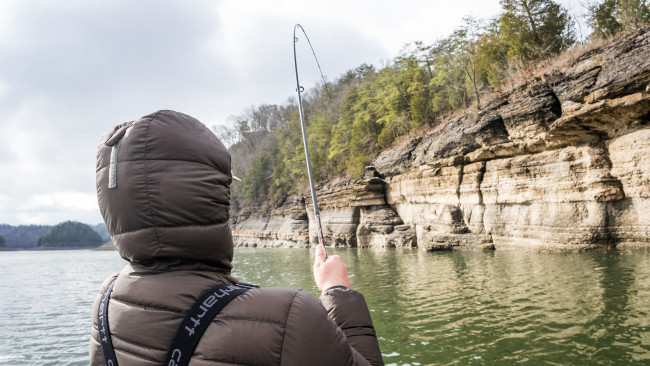
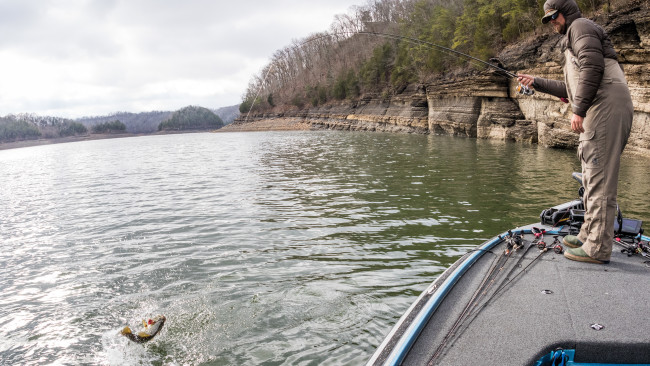
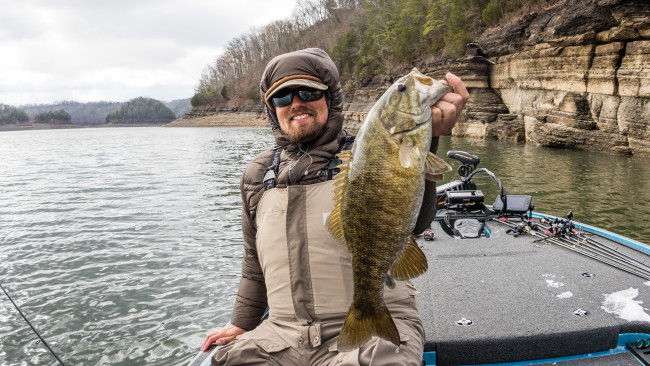
We make another short run and Ratliff is back on the front deck with a spinning rod in hand. It takes just a few minutes for him to hook up with a solid smallmouth.
“That’s just too much fun, man,” he says. “I know I shouldn’t stick ‘em, but I may not even fish this place in the tournament. It’s nice to get that quality of bite though.”
He slides the fish back in the water and pulls the trolling motor to go on the hunt for more brown.
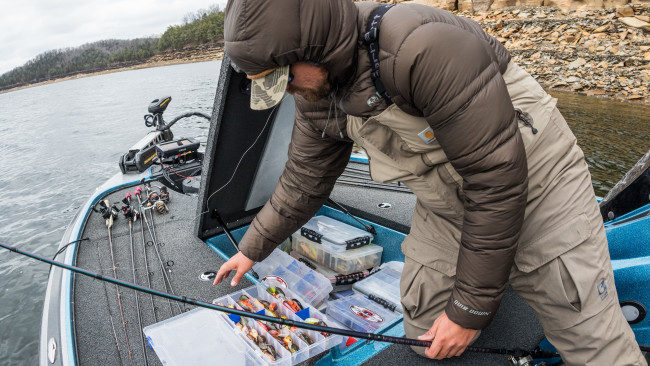
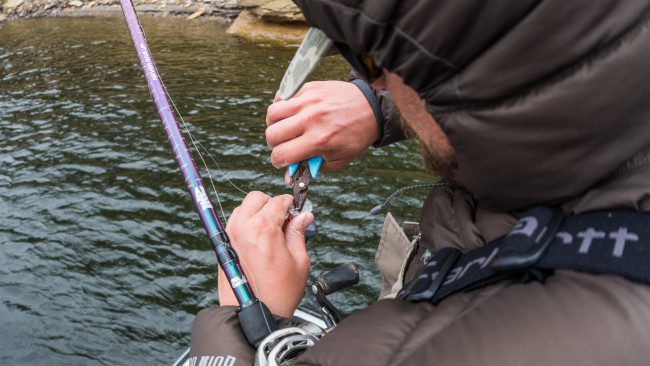
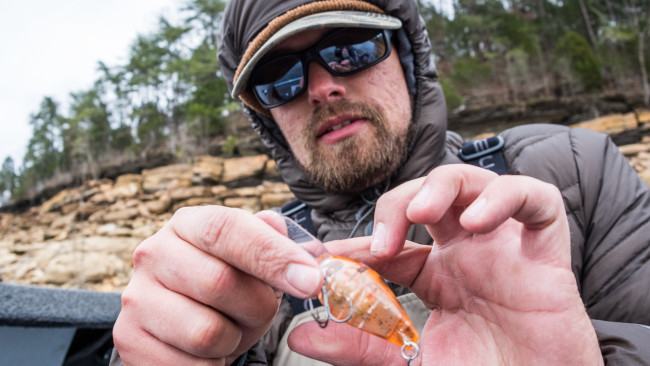
Ratliff stops on another bank that grabs his interest and immediately pulls out his crankbait box to tie a new plug on. He makes a few tweaks to get it tuned just right before he gets to fishing.
“I think a crankbait could dominate like it did last year in this event,” says Ratliff. “It’s just a good way to cover water and get bites.”
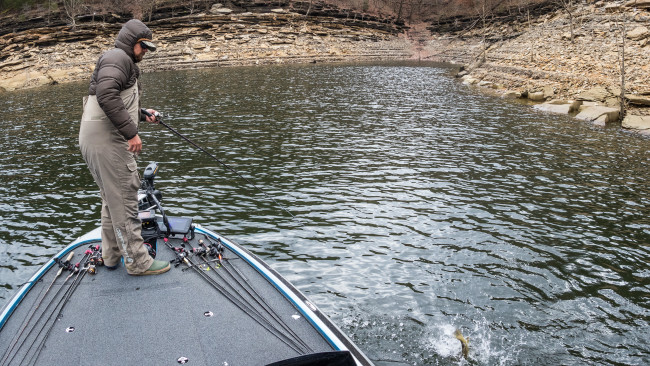
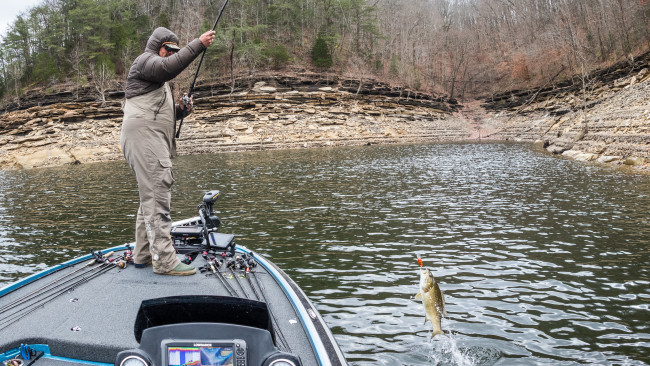
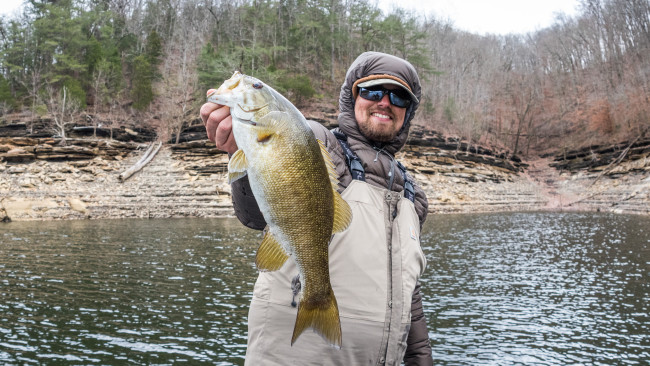
A few hundred yards into cranking the bank Ratliff hooks up with another keeper smallmouth. He flips the fish in the boat for a quick picture before bending the hooks over on his crankbait.
“When a smallmouth eats a crankbait it’s like running into a stump,” Ratliff says. “They just hammer it. I’ve had them hit it so hard they bend your hooks out even with a loose drag.”
Ratliff keeps cranking for a bit longer before deciding to run back down the lake towards the ramp.
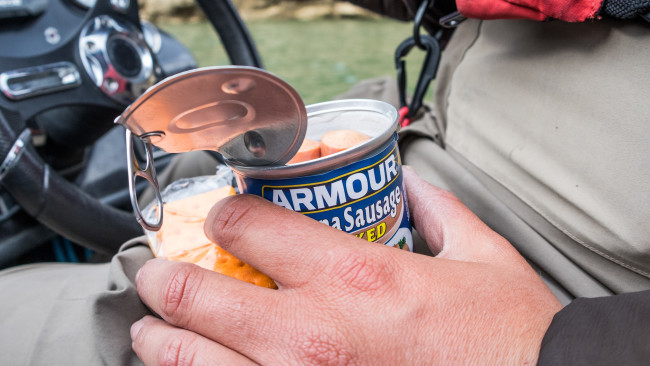
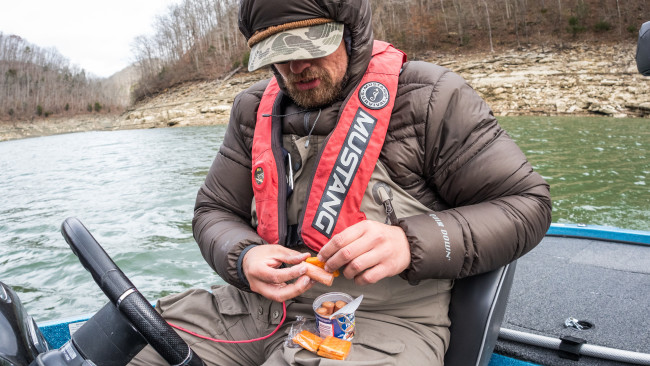
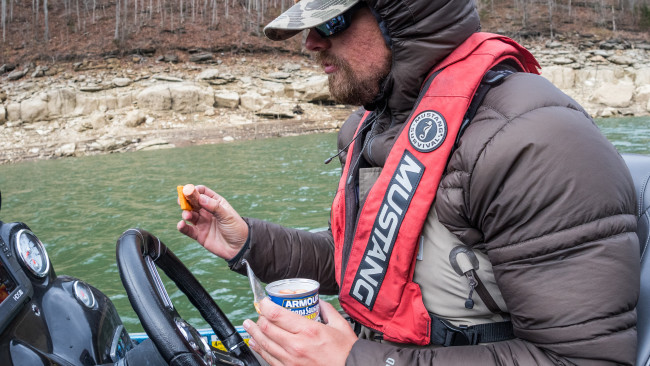
Idling around a new pocket, Ratliff takes a late lunch break as it’s nearly 3 o’clock at this point.
“Vienna sausage and peanut butter crackers make a good sandwich,” he jokes. “That kind of combination only comes together with time spent on the water. But, shoutout to my girlfriend for getting me snacks. I’m so bad about doing that and at the Toyota Series event on Dale Hollow I ate the same bag of sunflower seeds every day because I didn’t have anything else.”

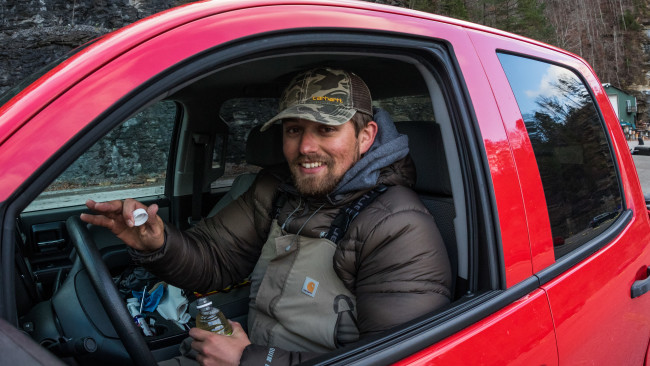
Ratliff checks another spot or two, but as it eases closer to 4 o’clock he’s ready to load the boat up for the day.
“I feel like I put the work in this week and now it’ll be all about decision making on Thursday,” Ratliff says. “I think things are still tough, but today it seemed like things were getting a little better and maybe with another cold night or two it’ll have things fired up for the tournament.”
Though Ratliff is thankful his job is flexible enough to give him time off to fish, he still hasn’t lost sight of pursuing a career in professional fishing. He finished 20th in the points this year in the Central Division and plans to fish another division next year, but winning on Cumberland would certainly be the kickstart he needs to fish full time.
Good luck, Nick.